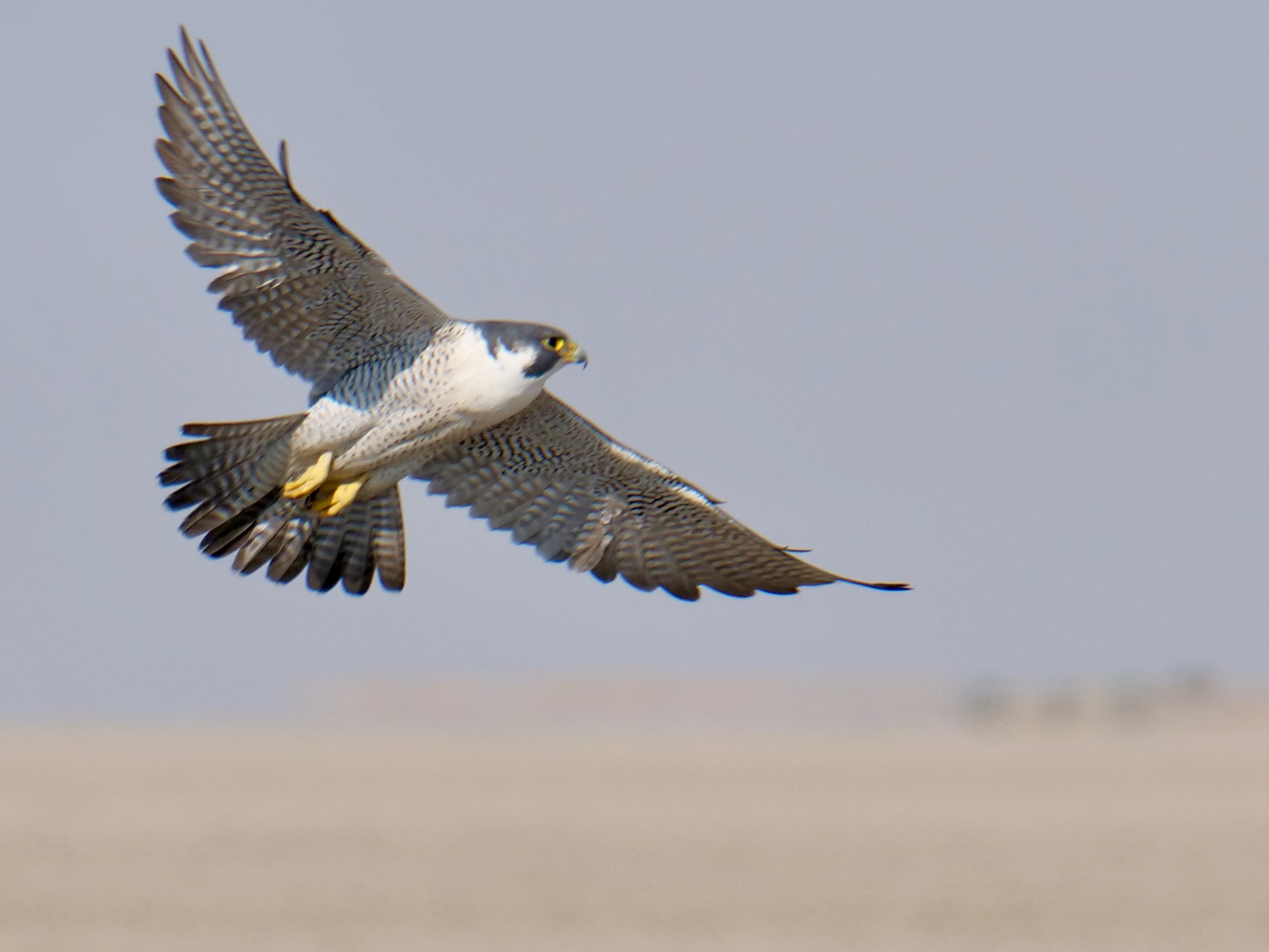This post’s peregrine – like yesterday’s – was photographed in the Great Rann of Kutch.
The plumage tells me that he was an adult, and his smaller size tells me that he was indeed a “he”, yesterday’s immature bird was rather larger, so almost certainly female.
My apologies for the image’s soft focus, but even when defying gravity, less than a second after take-off, a peregrine falcon moves very quickly.
My and/or my camera’s focusing abilities were not quite up to the required speed.
Assisted by gravity, diving down to their prey, peregrines are our planet’s fastest animals.
A human – even a human wearing a seat belt – would be highly unlikely to survive if their car was proceeding at 150 kilometres per hour when it ran into a tree.
A peregrine’s hunting stoop – its dive upon its prey, usually a bird – can reach rather more than twice that speed!
An unseen power line could prove fatal to the peregrine.
Otherwise, however, the intended victim is the only likely fatality.
Click here to discover how peregrines manage to do this, and much more. (sometimes, as in this instance, Wikipedia really delivers)
And/or see these – the first more measured, the second more hyped, but both worth viewing:
(There are other, more graphic videos, if you wish to seek them)
On the Great Rann of Kutch’s saltpan-proper, a stooping peregrine is most unlikely to run into a power line.
Click this to discover more about this extraordinary place – one of the world’s largest salt deserts, but also one of the more easily accessed.
Both the Great Rann and the Little Rann of Kutch are in Gujarat, westernmost India.
Kutch is culturally highly diverse, and a “global hotspot” for textile handcrafts – weaving, embroidery, woodblock printing, handpainting…of which, much more on Pelican Yoga, eventually, after the current crisis.
—
Falcons are the first creatures mentioned in today’s song, which has become one of the quintessential/emblematic “Irish” songs.
If you already know Song for Ireland, chances are it is via Mary Black’s version, or The Dubliners’.
The song’s finest recorded version, however, is a solo performance by a Scotsman.
And the song’s authors were English.
Husband and wife Phil and June Colclough were inspired to write Song for Ireland by a holiday they took in southwestern Ireland, primarily on the Dingle Peninsula.
Its Dunmore Head is the Irish mainland’s western extremity.
This performance is on Dick Gaughan’s 1981 album Handful of Earth.
If I were allowed only one album by a Scottish musician, or only allowed to hear one singing Scotsperson….
